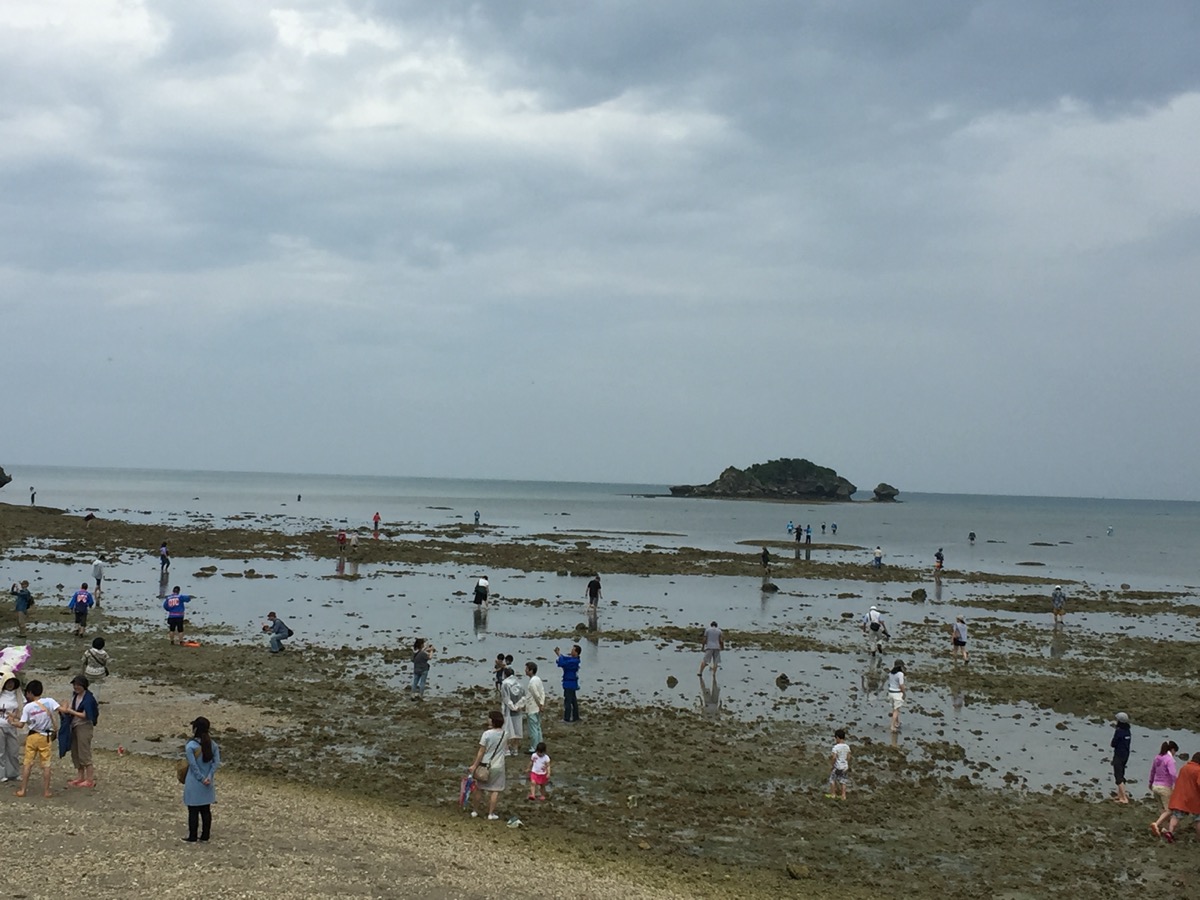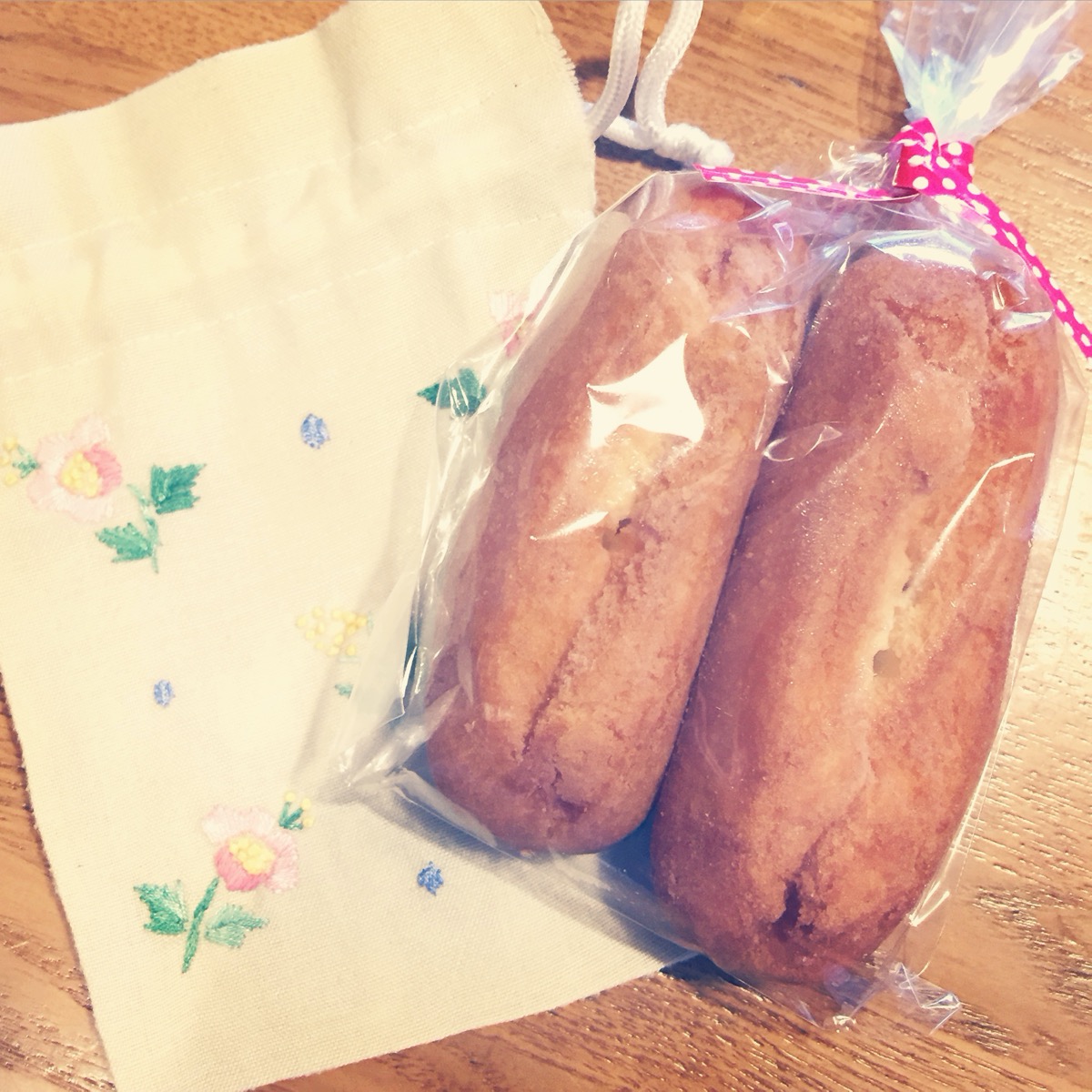The third day of the third month in the lunar calendar is Okinawa’s tradition that occurs on hinamatsuri in the lunar calendar (March 3rd). It is called 浜下り, pronounced hama uri ハマウリ (in Japanese these would be hama ori). 浜 hama means “beach,” and 下り uri is “to descend.” Some people may observe it on the western calendar date, but more often it is observed on lunar calendar date. **In 2017 this day will be on March 30th.
This is also associated with the event on Henza-jima, called Sangwacha (a fisherman festival). Sangwachi-gwashi (translation: March sweets) is commonly eaten by the beach.
On March 3rd of the lunar calendar, families take their girls down to the beach and get in the water to “purify” or “cleanse” them, and to pray for good health. The seawater is supposed to get rid of any bad spirits, curses, etc. Sometimes families will collect shells, harvest asa アーサー (type of seaweed) or small clams in the tidal areas, and often have a beach-side picnic. One of the ladies in my class reminisced about when she was a child, how on Hama uri her mother took her down to the beach, they would go digging for clams and then have a picnic. She explained that on this day, the tides are low, so it is easy to harvest the clams and asa.
The Legend behind Hamauri:
Long ago, a young man visited a young girl of marriageable age one evening. He was obviously a nobleman, but he didn’t speak much about himself. He spoke sweetly to the young woman and they were became lovers. When the parents found out their daughter had become pregnant, they decided to discover more about who the mysterious nobleman was since he never said where he was from. The parents told the girl to stick a needle with a long thread to the bottom of the nobleman’s kimono when he next visited.
That night as he slept, the girl did as her parents told her. The next morning they followed the thread deep into the woods, into a cave, and inside the cave a huge snake was coiled up that spoke to them. The snake said if the girl did not enter the sea to purify her body, she would bear his children– they realized he was not a man at all, but a magical snake.
When the parents returned home, they immediately took their daughter down to the ocean to purify her body in the salt water– dead baby snakes flowed out of her body! The evil snake’ magic spell was broken and the young nobleman was never to be seen again.

